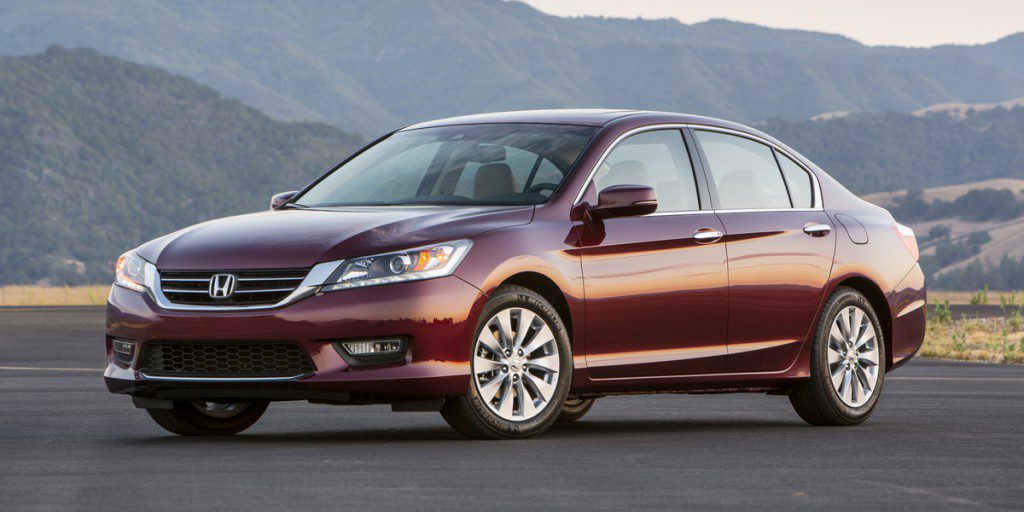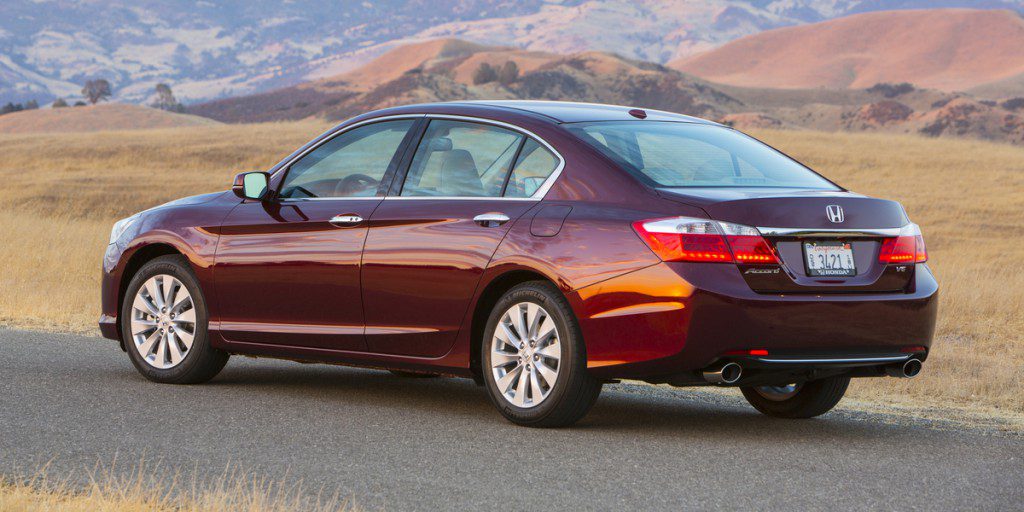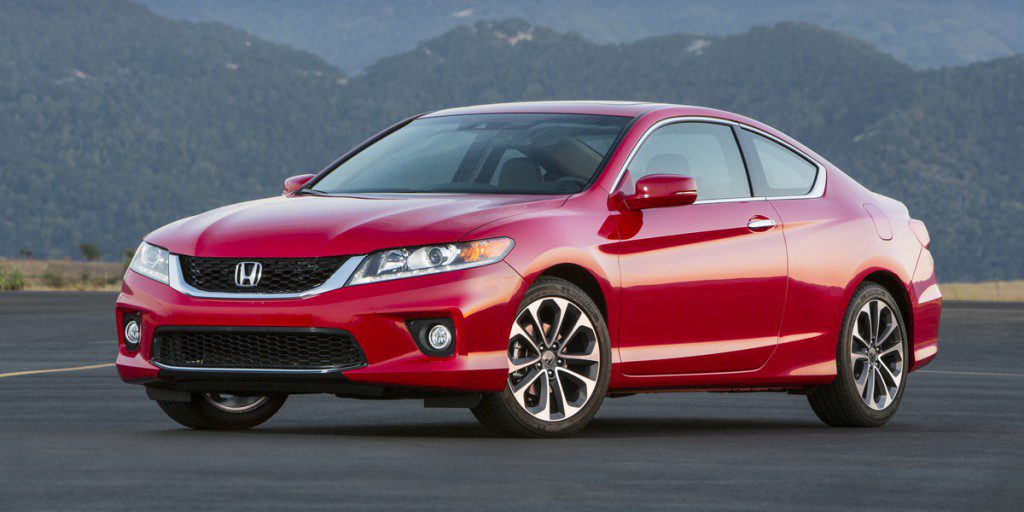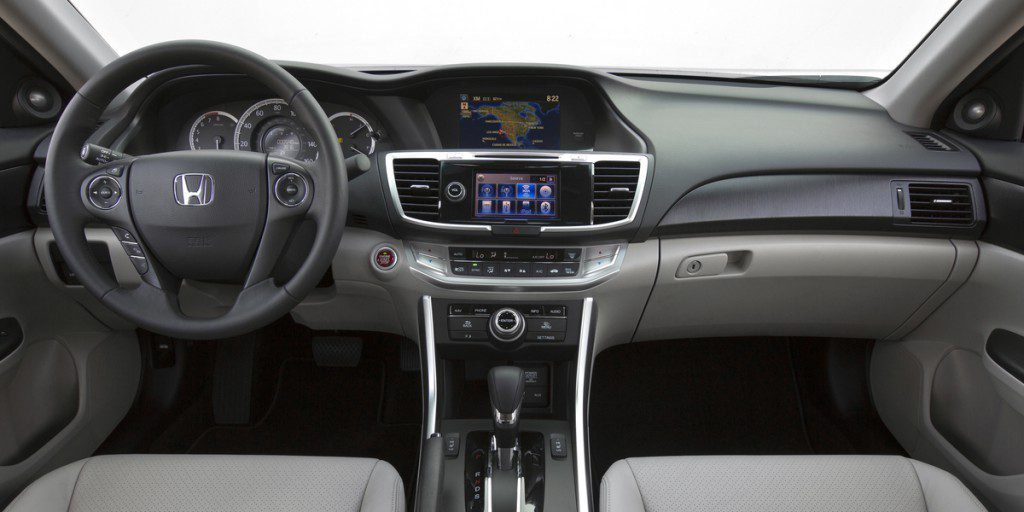| Midsize car; Built in USA, Japan |
|
|
| Good condition price range: $10,200 – $22,100* |

2014 Honda Accord

2014 Honda Accord

2014 Honda Accord

2014 Honda Accord
| Pros: |
|
| Cons: |
|
In the face of ever-improving midsize rivals, Honda redesigned the Accord for 2013 with an admirable focus on maintaining the car’s individual character. The Accord delivers tangible improvements on most every front, but also stays true to its traditional strengths: a fine ride/handling balance, a spacious back seat, and a solid, cohesive overall feel. Highlights of the redesign include worthwhile new technology features and improved fuel economy figures with no significant penalty in performance. Now more than ever, the hyper-competitive midsize segment is filled with excellent vehicles, but the Accord’s redesign helps it keep pace with the best in the class.
Overview
One of the top-selling cars in the U.S., the front-wheel-drive Accord Sedan and Coupe have long been a benchmark among midsize cars. It has also been a consistent recipient of Consumer Guide Automotive awards. The sedan version was by far the most popular, though a Coupe was also offered. As coupes go, the Accord was more practical than most, offering slightly better rear-seat room and accessibility than some rivals. The Accord platform was also used for the SUV-flavored Crosstour (see separate report).
Accord sedan’s biggest competitor over the years has been the Toyota Camry, and the two typically battled it out for the #1 and #2 sales slots among cars in the U.S. Other class rivals included the Nissan Altima, Hyundai Sonata, Kia Optima, Chevrolet Malibu, and Ford Fusion in what was perhaps the most competitive segment in all of autodom.
The only directly competing midsize coupe was the Nissan Altima, which was also front-wheel drive. However, the Altima Coupe was offered only with 4-cylinder power. The Accord Coupe’s indirect competitors included the Hyundai Genesis Coupe and V6-powered versions of the Chevrolet Camaro, Dodge Challenger, and Ford Mustang. All of those coupes were rear-wheel drive, however.Almost all Accords were built in the U.S. A small number of early-production Accords were built in Japan. A plug-in hybrid version (introduced for the 2014 model year) was also built in Japan.
The 2013 Accord was redesigned with new styling, new features, a new 4-cylinder engine, and an updated V6 engine. Wheelbase shrank by about an inch and overall length was down by 2.7 inches for 2013–despite this, both rear legroom and cargo volume improved slightly.
Two engines were offered in the Accord: an 185-horsepower 2.4-liter four-cylinder or an 278-horsepower 3.5-liter V6. The V6 included Honda’s Variable Cylinder Management cylinder deactivation.
Four-cylinder Accords offered the choice of a 6-speed manual transmission or a continuously variable transmission (CVT) that behaved much like an automatic. V6 Accord Sedans came only with a 6-speed automatic transmission, while V6 Accord Coupes also offered a 6-speed manual.
All Accords had front-wheel drive.
All the expected safety features were standard on all Accords. Newly available safety features for 2013 included Lane Departure Warning, Forward Collision Warning, and Honda’s LaneWatch camera.
Yearly Updates
| 2014 Accord Hybrid and plug-in hybrid versions of the Accord sedan were added for the 2014 model year. The non-hybrid Accords were little changed. |
| 2015 Accord Honda Accord saw only minor changes for 2015. EX-L models got a Homelink universal remote system, EX-L coupes got an auto-dimming rearview mirror, and EX Coupes added Honda’s LaneWatch rear-view camera system. |
